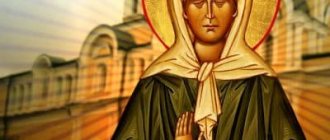Znamensky Cathedral is one of the most ancient Orthodox churches located in Tyumen. Its truly solemn and majestic appearance evokes genuine admiration from everyone who sees this unique structure for the first time.
Architecture of the cathedral, © Official VKontakte pageThe cathedral attracts attention with its unusual architecture, internal volume, amazing tranquility, noble paintings of walls and vaults. The snow-white facade, set off by the azure blue of the roofs and numerous gilded domes topped with crosses, seems to float above the earth, emphasizing the mystical unity of the temple with heaven.
Schedule of services in the Znamensky Cathedral
Services in the temple are held daily in the morning and evening.
- Liturgy on weekdays - at 08:30.
- Liturgies on Sunday - at 06:30 and 09:00.
- Evening service - at 17:00.
Requested prayer services are held Monday through Thursday at 2:00 p.m. The exception is holidays.
Znamensky Cathedral - schedule of services for October 2020
Patriarchal visit to the Cathedral of the Sign, © patriarchia.ruCalendar and Annunciation
Christianity has relied on the Julian calendar from the very beginning because it was the calendar used by the Roman Empire. In the first 3 centuries, when there were still persecutions against Christians, there were no holidays as such. The first Christians performed divine services and revered Sunday, Wednesday and Friday as specific days of the passion of Christ.
Then separate holidays appeared, tied to the calendar. Among them is the Annunciation, as a key date, fixed for the entire season. Christmas - winter, Annunciation - spring, Nativity of John the Baptist (Ivan Kupala) - summer and Exaltation (Beheading) - autumn. Holidays began to be established and tied to a specific day in the 4th century. In 325, the First Ecumenical Council proclaimed that all Christian Churches, all Christian states should live according to one calendar - the Julian. And now for the Orthodox Russian, Serbian, Jerusalem and Georgian churches, plus for the Old Believers, the Julian calendar is in effect, unlike, for example, Catholics.
Ceiling fresco “The Annunciation” in the Church of Santa Maria Assunta (Cappella del Suffragio) by Teofilo Polacco (19th century), Riva del Garda, Italy
History of the temple
There is no exact information about the founding date of the first wooden church. What is known is the period of its construction - between 1624 and 1659, and the fact that it had two aisles. One of the local legends says that the temple was built on the site of the appearance of the image of the Mother of God to a local coachman in memory of the heavenly sign. This is where the name Znamensky came from.
As a result of a severe fire in 1697, which turned the city into ashes, the wooden church also burned down. It was soon restored, but the fire of 1766 again destroyed the temple. In 1768, it was decided to lay the foundation for a new stone building. Initially, the building included a main room with a main altar, a vestibule with a two-tier bell tower, and a refectory with a warm aisle. In the latter, a throne was laid for the services held in winter. In front of the entrance there was a porch framed by round columns. The roof, dome, floor and fence enclosing the territory were made of wood.
Until 1837, the icon of the Last Judgment was located in the round window above the entrance. It was moved to the wall of the porch, and in its place an icon of the Mother of God “The Sign” was installed. In 1850, the process of reconstruction of the temple began. It was expanded, insulated, the old chapel was dismantled and a new one was built, which later burned down. The wooden flooring was dismantled and replaced with cast iron slabs. At the beginning of the 20th century, three chapels appeared, a new dome over the refectory, an additional tier in the bell tower structure and a richly decorated iconostasis. At the same time, landscaping of the surrounding area was carried out.
In 1913, the Znamenskaya parish church received the status of a cathedral. By 1917, the parish contained parochial schools, colleges and a girls' gymnasium.
The cathedral ceased functioning in 1929, but from 1933 to 1941 it was returned to believers. Then the temple was confiscated again, military units were placed in it, then a transit prison and even a machine and tractor station. After 1945, the Znamensky Church came under the jurisdiction of the Orthodox community. In the 90s of the last century, its new history of revival began.
Three-tier bell tower, © Official VKontakte page
Nowadays
The Znamensky Cathedral belongs to the Tobolsk Metropolis. The department of the metropolitan, who is also the rector of the church, is located here. The complex includes a Sunday school - one of the largest in the region. Parishioners and patrons of the arts are actively participating in the restoration of the Orthodox complex.
- In 1992, bells were delivered from the Far East.
- In 1994, religious processions were resumed.
- In 2002, the belfry was updated with 12 bells.
- In 2003, new domes and crosses were installed.
Currently, funds are being collected for the restoration of the interior of the cathedral.
Main entrance, © Official VKontakte page
Annunciation Cathedral of Tyumen - the pearl of Siberia
Posted by: lomsecret, 04/21/2016, 06:33, Journey into history, 2,791, 0
In June 1985, construction of a pedestrian bridge across the Tura began, and it was officially opened in 1987. On the right bank, where a pedestrian’s foot from the bridge enters the bank, under the asphalt there are the remains of the foundation of the Annunciation Cathedral. This was the first stone building in Tyumen. They began to build it in 1700, the construction proceeded slowly, with interruptions, and ended only in 1708. The Annunciation Cathedral was located on the high bank of the Tura above the state treasury opposite the building of the City Duma (now the local history museum), was the decoration of Tyumen and was its spiritual symbol. Unique in its external and internal decoration, it was deservedly called the Patriarch of white-stone architecture, the pearl of Siberia. At the beginning of the 20th century, there were seven bells on the bell tower of the Annunciation Cathedral. One of them weighing 16 pounds 23 pounds (265 kg) was cast in 1754 in Nevyansk, the rest - in Tyumen in the 19th century. The largest bell weighed 232 pounds (3,712 kg), the smaller bell weighed 53 pounds (848 kg). Under the Annunciation Cathedral and in its vicinity, according to the custom of that time - the 18th century - there was a system of underground passages and secret cellars where church records were kept. values. One day, opposite the Gostiny Dvor on the bank of the Tura, a sinkhole occurred and an underground passage opened up. Soldiers with lanterns descended into it and were absent for a long time, apparently, the passage was long. Among the old-timers of Tyumen, there was a widespread belief that underground passages connected all the churches in the city center and even the Trinity Monastery outside Tyumenka. According to ancient custom, near the cathedrals and churches, the most eminent and wealthy citizens were buried - this right cost a lot of money. When the edge of the bank opposite the museum was cut off in the early 1960s, an excavator repeatedly removed the remains of coffins and crypts. There were many burials near the Annunciation Cathedral; marble and granite tombstones with inscriptions lay on the graves. They were taken in the 30s of the 20th century to Zarechye and placed in the body of a dam, which protects it from floods; in the area of modern school No. 11, Tura is also persistently shredding the shore there. The tombstones from the Parfyonovsky cemetery also went there. It was said that until 1979, when the dam was widened and built up, the tombstones were visible after the water subsided. In 1962, the steep bank was cut down to the Republic Street. Then they began to build an embankment, the shore near the water was reinforced with concrete slabs. The Tura really eroded the shore here. The plan of Tyumen of the 17th century shows that the modern streets of Volodarsky (now it abuts the bank at the agricultural academy) and Khokhryakova (now it approaches the river at the beginning of Semakova Street) reached the Annunciation Cathedral. If you stand at the pedestrian bridge and mentally continue the streets towards you, it turns out that they should have ended in the middle of the modern Tour. The same plan shows that from the cathedral to the mouth of the Tyumenka there is still much more land than now, and it is even densely built up. At the end of the 19th century, on the banks of the Tura between the Annunciation Cathedral and the house of the merchant Nizamudinov (within modern boundaries: from the suspension bridge to Dermatovenerological dispensary) there was a fairly extensive Prikazchikov Boulevard, where the Tyumen nobility strolled in the evenings. Back in the 1930s, there was so much space here that cavalry soldiers trained on it in taking barriers and cutting down vines: then they were going to fight with the world bourgeoisie, like a civilian, with a saber on a war horse. In 1932, the Annunciation Cathedral was closed, an anti-religious museum was organized in its building, and in July 1932 it was blown up.
In 1997, work began on the restoration of the Annunciation Cathedral in Tyumen. In 2001, the parish in honor of the Annunciation of the Blessed Virgin Mary was recreated. The parish collected more than two and a half thousand signatures of townspeople on a petition on the need to restore the Annunciation Cathedral. In the old place - on the bank of the Tura, it was impossible to restore the Cathedral in our time; the river had long ago reclaimed most of the bank. 300 years after the consecration of the first Annunciation Cathedral, in 2004, the restoration of the Annunciation Cathedral began in the Deputies Square. April 7, 2004, on the feast of the Annunciation The icon of the Annunciation of the Blessed Virgin Mary was found from the Royal Doors of an unknown destroyed church. On April 15, 2004, on the Thursday of Holy Week, the Archbishop of Tobolsk and Tyumen Dimitri consecrated the worship Cross and a plot of land for the construction and restoration of the Annunciation Cathedral. May 30, 2004 on Trinity Sunday deanery of the Tyumen district, on the territory of the Znamensky Cathedral, the first meeting of the trustees of the Annunciation Cathedral in Tyumen was held under the chairmanship of Archbishop of Tobolsk and Tyumen Dimirty. From May 31 to June 12, 2004, one of the trustees made a pilgrimage to Athos. By the great mercy of the Most Holy Theotokos, the Russian St. Panteleimon Monastery, as a blessing for the restoration of the Annunciation Cathedral, transferred the icon of the Most Holy Theotokos - Abbess of Mount Athos and five stones from the embankment of the Panteleimon Monastery to the foundation of the Annunciation Cathedral with an accompanying letter. On August 19, 2004, on the feast of the Transfiguration of the Lord, they were donated funds for the chapel. On September 20, 2004, on the eve of the Feast of the Nativity of the Blessed Virgin Mary, a chapel was erected in the Deputies Square and on the site for the restoration of the Annunciation Cathedral. On January 9, 2005, the Annunciation Church-Chapel was consecrated by Archbishop of Tobolsk and Tyumen Dimitri. In October 2006, simultaneously with the discovery of the relics of St. Philotheus (Leshchinsky), Metropolitan of Tobolsk and Siberia, trustees appeared and permission to build the cathedral was received. On April 7, 2007, on the patronal feast of the Annunciation of the Blessed Virgin Mary, the consecration took place and the first pile was driven for the construction of the Annunciation Cathedral. On October 20, 2007, on the eve of the anniversary of the discovery of the relics of St. Philotheus, bricks taken from the foundation of the blown-up Annunciation Cathedral were laid into the altar wall of the cathedral being restored.
On April 7, 2009, on the patronal feast of the Annunciation of the Blessed Virgin Mary, after the solemn Divine Liturgy, in the presence of a large number of parishioners, builders and trustees of the temple, residents of microdistricts, the consecration of the crosses took place by Archbishop Dimitry of Tobolsk and Tyumen and the raising of the dome to the bell tower. In June 2009, construction of the building was almost completed The restored Annunciation Cathedral is ready for the installation of the dome, but construction is temporarily suspended. Currently, the construction of the Cathedral continues, on the eve of the feast of the Annunciation of the Blessed Virgin Mary, on April 6, 2021, a charity television and radio marathon “Man and Faith” was held in the Annunciation Cathedral under construction in Tyumen " The main goal of the action is to raise funds to complete the construction of the Annunciation Cathedral. Fundraising for the reconstruction of the main cathedral of Tyumen continues. Contributions to the construction of the cathedral are made by both large organizations and individuals. Everyone can contribute to this good cause. You can make donations in person by visiting the Annunciation Cathedral at Tyumen, st. Shirotnaya, 83 "b"
, or through target circles located in all churches of the Tobolsk-Tyumen diocese.
- 0
Icon of the Mother of God “The Sign”
The main shrine of the Znamensky Cathedral is revered as miraculous. It is believed that it was she who saved the Tyumen residents from the plague epidemic that occurred in 1848. The church chronicle mentions how one of the parishioners had a vision in a dream, which spoke of removing the icon from the bell tower, performing a prayer service and surrounding every house and the entire city with it.
The process was completed in ten August days, after which a real miracle happened. The epidemic retreated and disappeared into oblivion. This event is remembered and honored to this day. A year after the events described, the shrine was placed in a silver robe decorated with precious stones and given a place of honor in the temple.
The Icon of the Mother of God “The Sign” is a copy of the Novgorod miraculous icon, known since 1170 and located today in the St. Sophia Cathedral of Novgorod. It is assumed that the Tyumen prototype was made by local icon painter Spiridon at the beginning of the 17th century on canvas and pasted onto a cedar shield.
After the temple was closed in 1929, the shrine disappeared. According to one of the participants in the restoration work at the end of the 40s of the last century, the “Sign” icon was discovered with its face facing the wall on one of the tiers of the bell tower. Later it was either restored or replaced with a more modern list.
Annunciation and display of the holiday in art
The Gospel of Luke says that the Angel Gabriel prophesied to the Virgin Mary: “And behold, you will conceive in your womb and give birth to a Son, and you will call His name Jesus.” This subject is very popular in painting, especially in Western Europe.
In the dictionary “Characters, plots, emblems, symbols in Western European art” by James Hall and Kenneth Clark, first of all, it is emphasized that the good news came in the spring - hence in the paintings a flower appears in a vase next to Mary, usually a lily - a symbol of purity. There is a spinning wheel or basket of yarn that alludes to the legend of the Virgin Mary being brought to the Temple in Jerusalem, where she was to weave robes for the priests. “Her most constant attribute is the book in which, according to St. Bernard, she reads the famous prophecy of Isaiah (7:14): “Behold, the Virgin shall be with child, and shall bear a Son...”.” From the angel come the words Ave Maria or Ave gratia plena Dominus tecum (“Hail, full of grace! The Lord is with you”), and from Mary: Ecce ancilla Domini (“Behold, the handmaid of the Lord”). The last phrase can be written upside down so that it is easier to read to God the Father, pictured above. The Virgin Mary either stands or sits, and more often kneels on a bench for prayer. If she is standing, then turning away from the Angel. Her hands are raised, and with all her appearance she expresses fear: “And the Angel said to Her: “Do not be afraid, Mary.”
Archangel Gabriel appears with wings and, according to tradition, in all white. He may descend to the Virgin Mary, but is usually depicted standing or kneeling before her.”
The Annunciation by Leonardo da Vinci was painted for the monastery of St. Bartholomew in Monte Oliveto near Florence. This is one of Leonardo's earliest works, 1472-1475.
Architecture of the Znamensky Cathedral
The main temple of the city is located in the quiet historical center of Tyumen on Semakova Street, formerly called Podaruevskaya. The entire perimeter of the complex is surrounded by a stone fence with an elegant wrought-iron filling, allowing you to see the cathedral in all its glory without entering its territory.
The Znamensky Cathedral acquired its final architectural image as a result of several reconstructions carried out at the turn of the 19th and 20th centuries. Its construction lasted for one and a half centuries.
According to experts, the object is a striking example of the Russian or Siberian baroque style. The overall composition turned out to be so organic and picturesque that we can confidently speak about the significance of each of the facades of the temple. Despite numerous and lengthy reconstructions, the appearance of the cathedral has retained a single architectural style.
View of the Znamensky Cathedral from the street, © Official VKontakte page
One of the external features is the upward direction, unusual for Orthodox churches, vaguely reminiscent of the style of Gothic churches. A certain provincialism, emphasized by the originality and originality of Russian architecture, appears before the viewer in the form of:
- figured pediments;
- multi-tiered decorative domes;
- elongated windows;
- narrow corner pilasters;
- spatial game of volumes.
The dynamism of the architectural image is supported by snow-white facades, enriched with decorative elements of azure blue color, which do not allow the curved forms to visually merge with the walls.
The cozy area is decorated with flower beds and green spaces. There are benches for relaxation and a church shop where you can buy icons, crosses, candles and Orthodox books.
Znamensky Cathedral on Google panorama
Interior and interior decoration
The choirs of the cathedral with carved consoles and original wooden sheathing have been preserved from pre-revolutionary times. Round shapes and wide passages prevail in the temple. High arched openings lead into the spacious refectory, and from it into the southern and northern aisles.
The interior decoration is distinguished by a wealth of decorative elements, unique plot ornaments and paintings, presumably made on top of older images. The unique gilded iconostasis, like many other church property of the 18th-19th centuries, was lost. In the second half of the 1940s it was replaced by a new three-tier one. The main shrine of the cathedral is considered to be the icon of the Mother of God “The Sign”.











